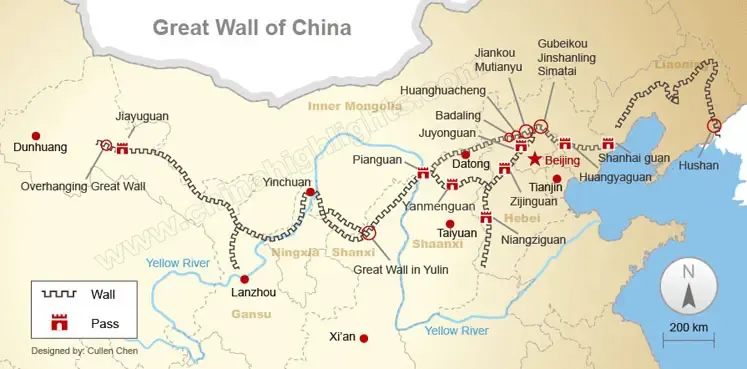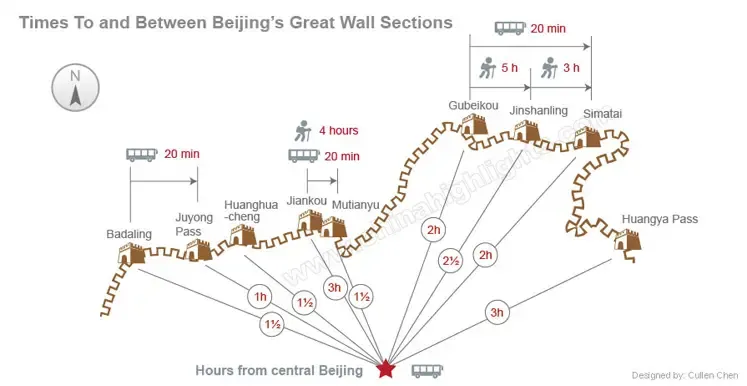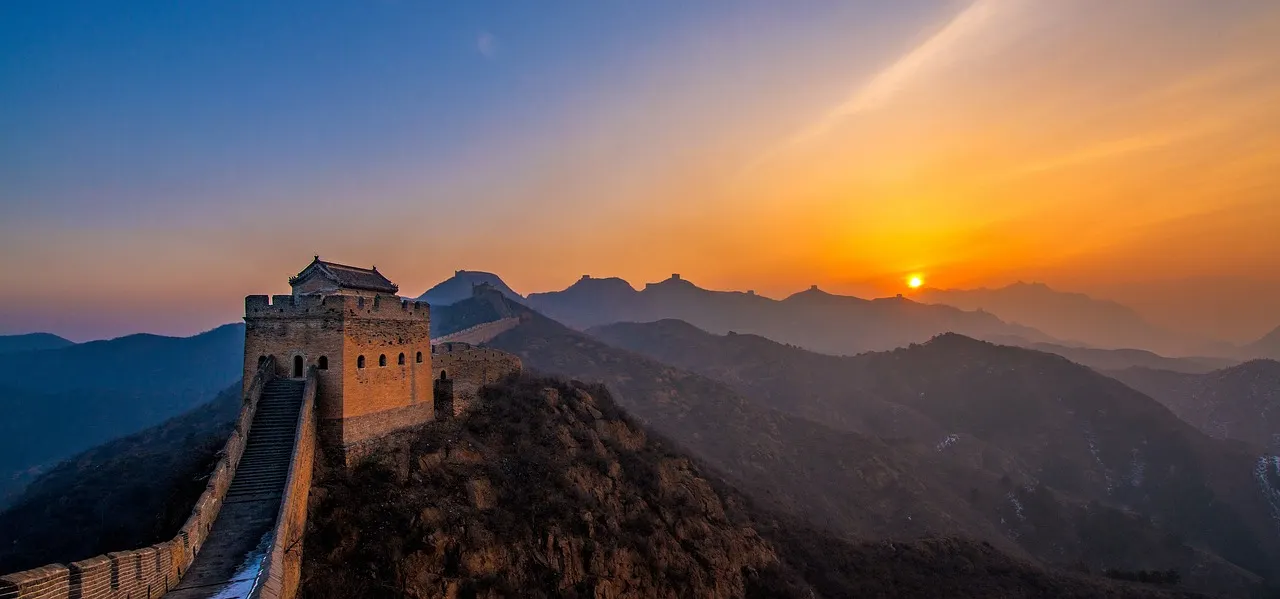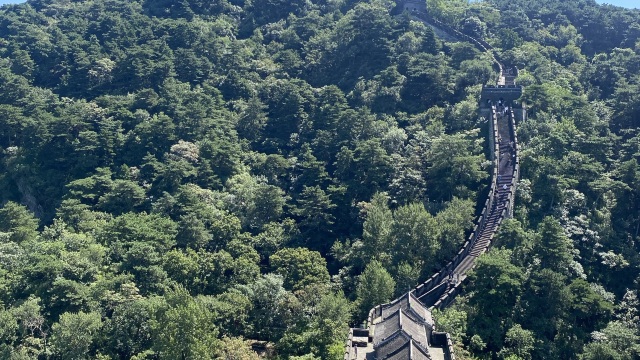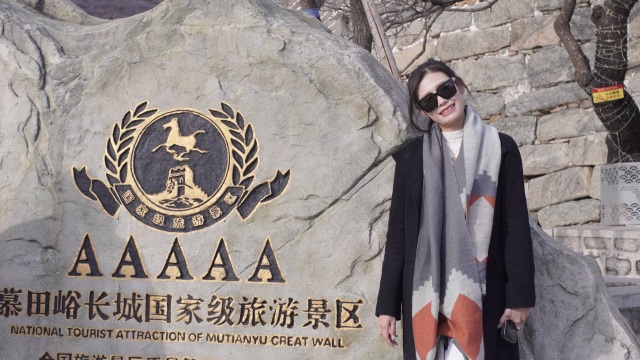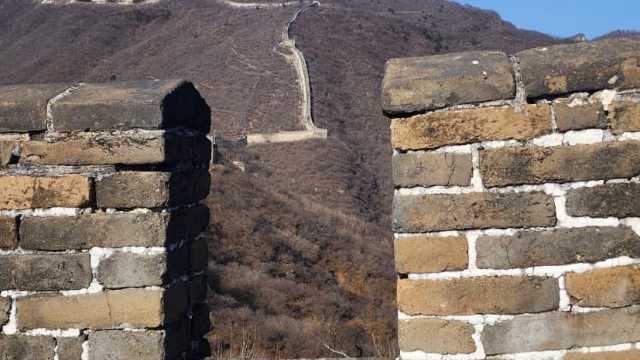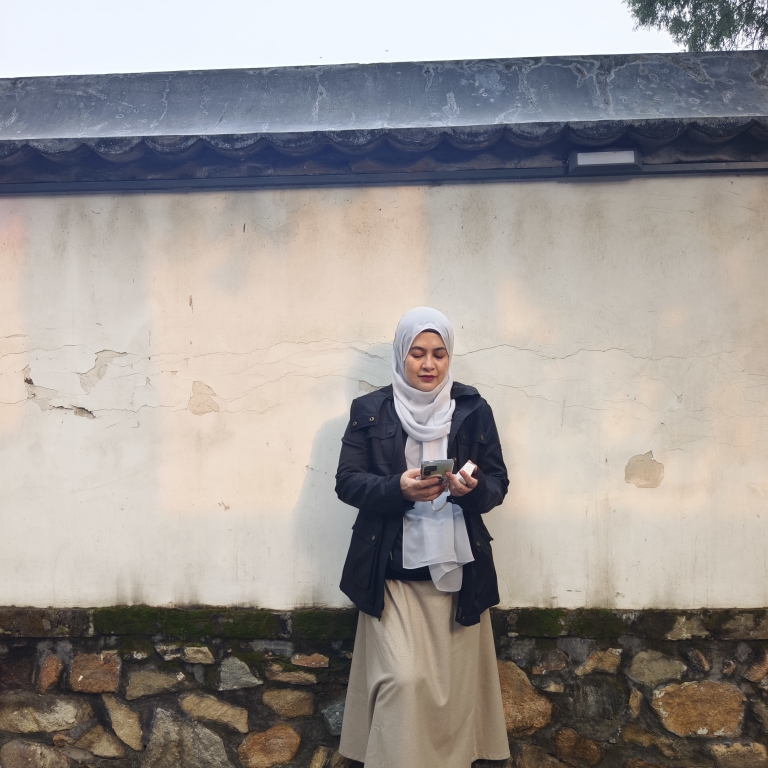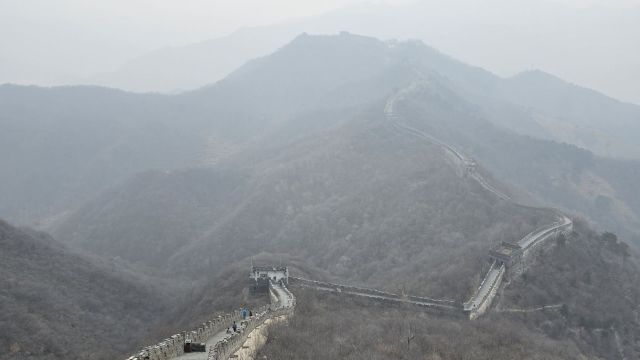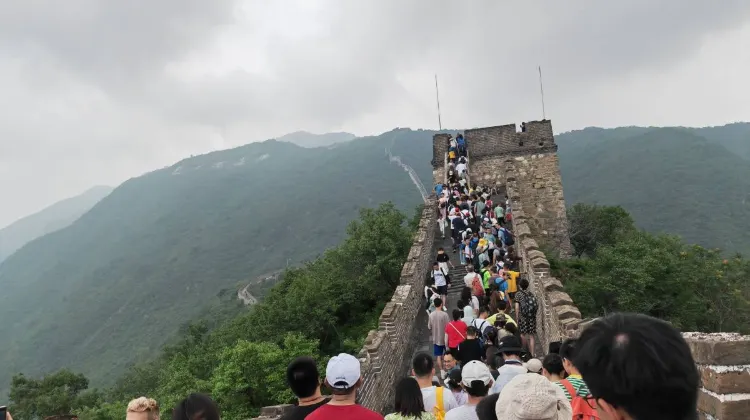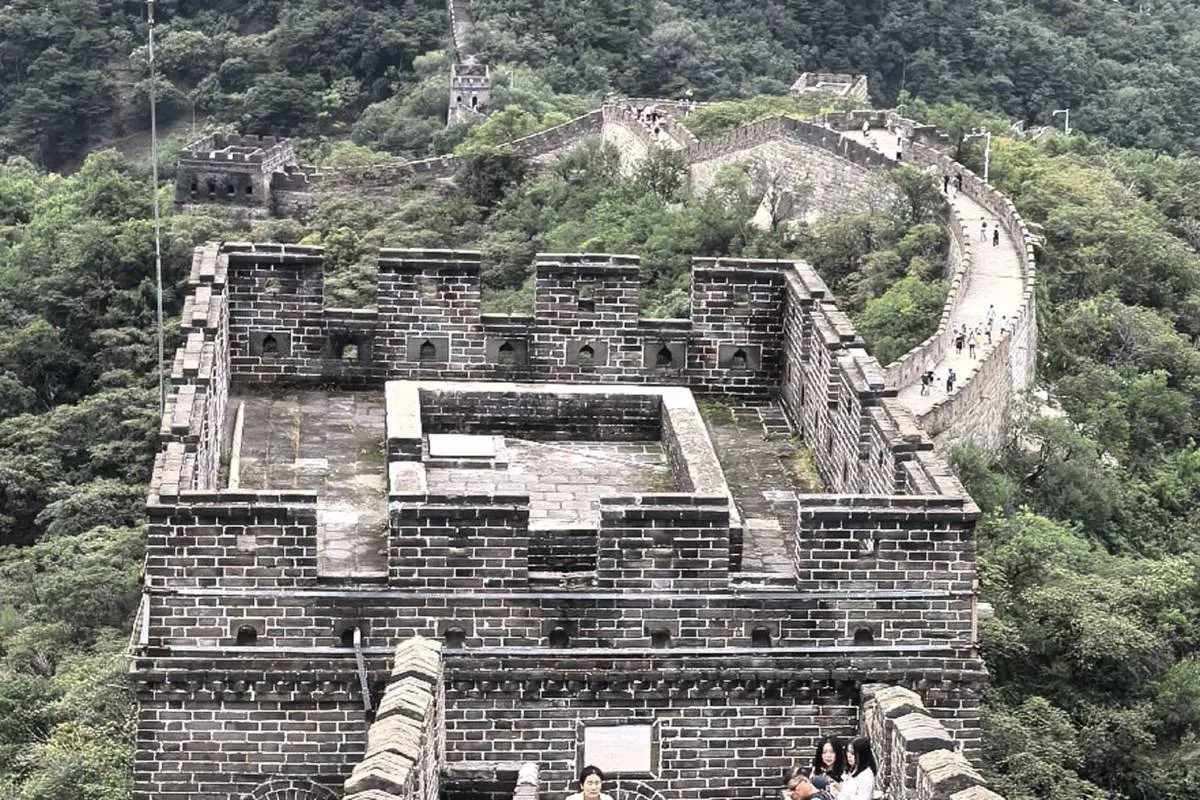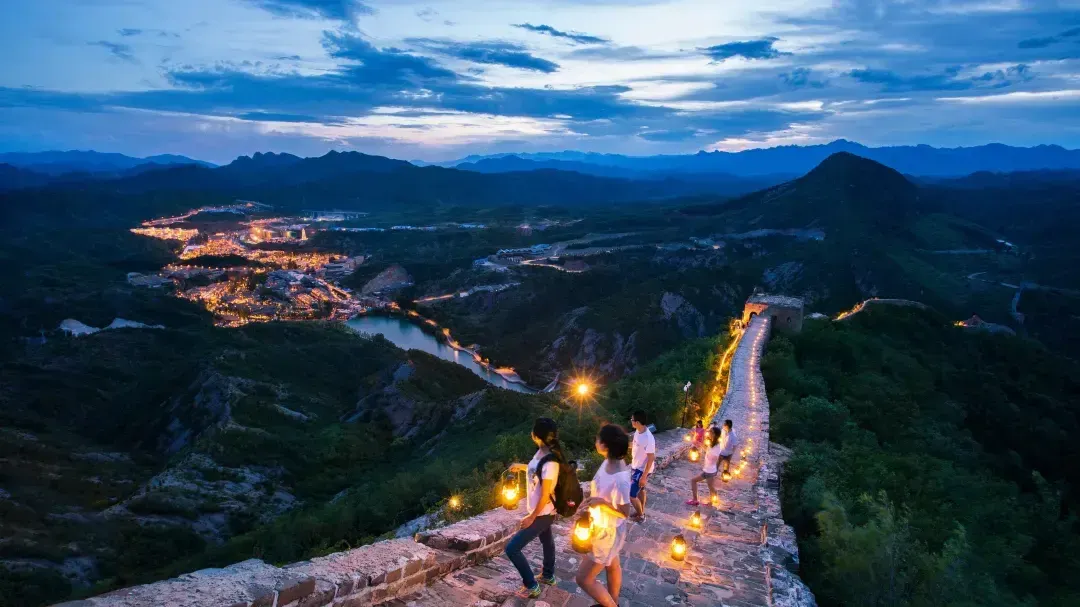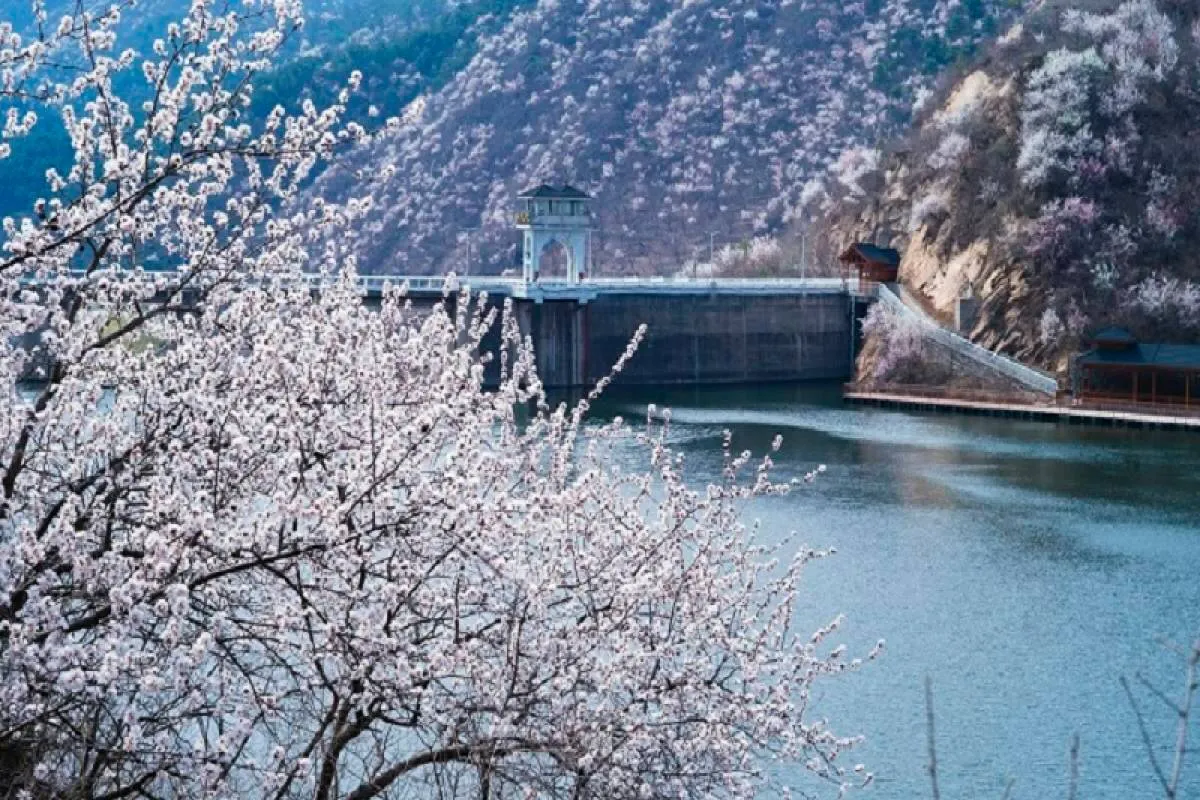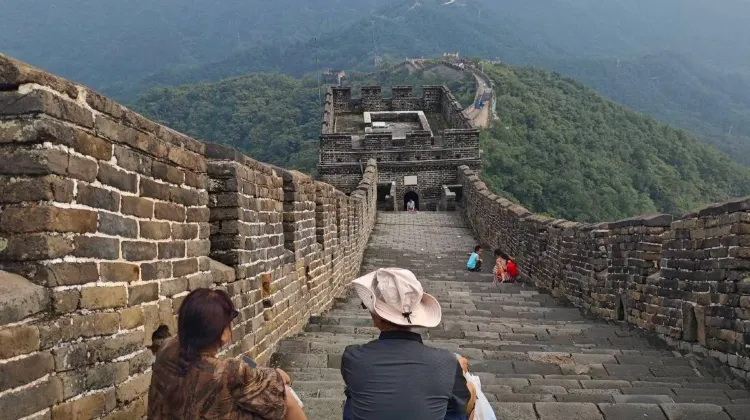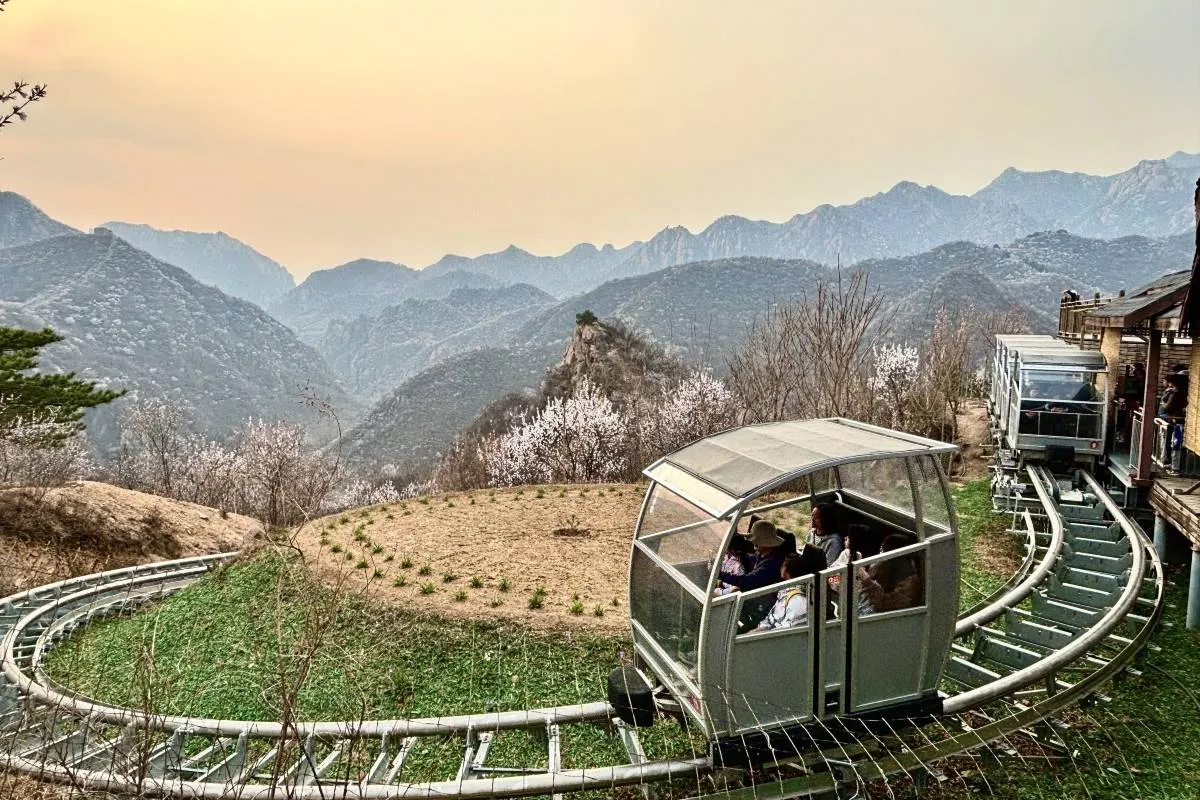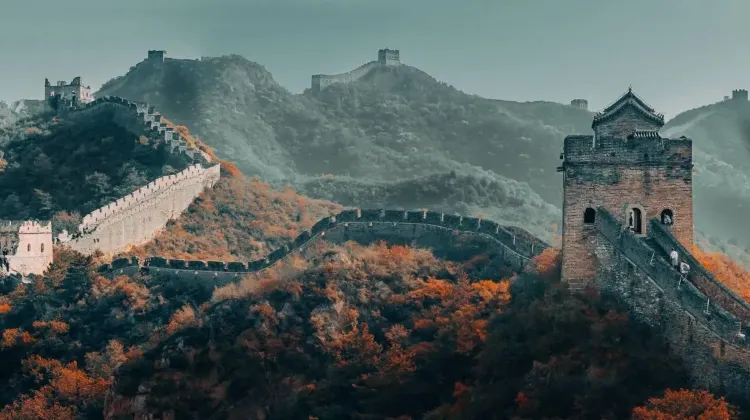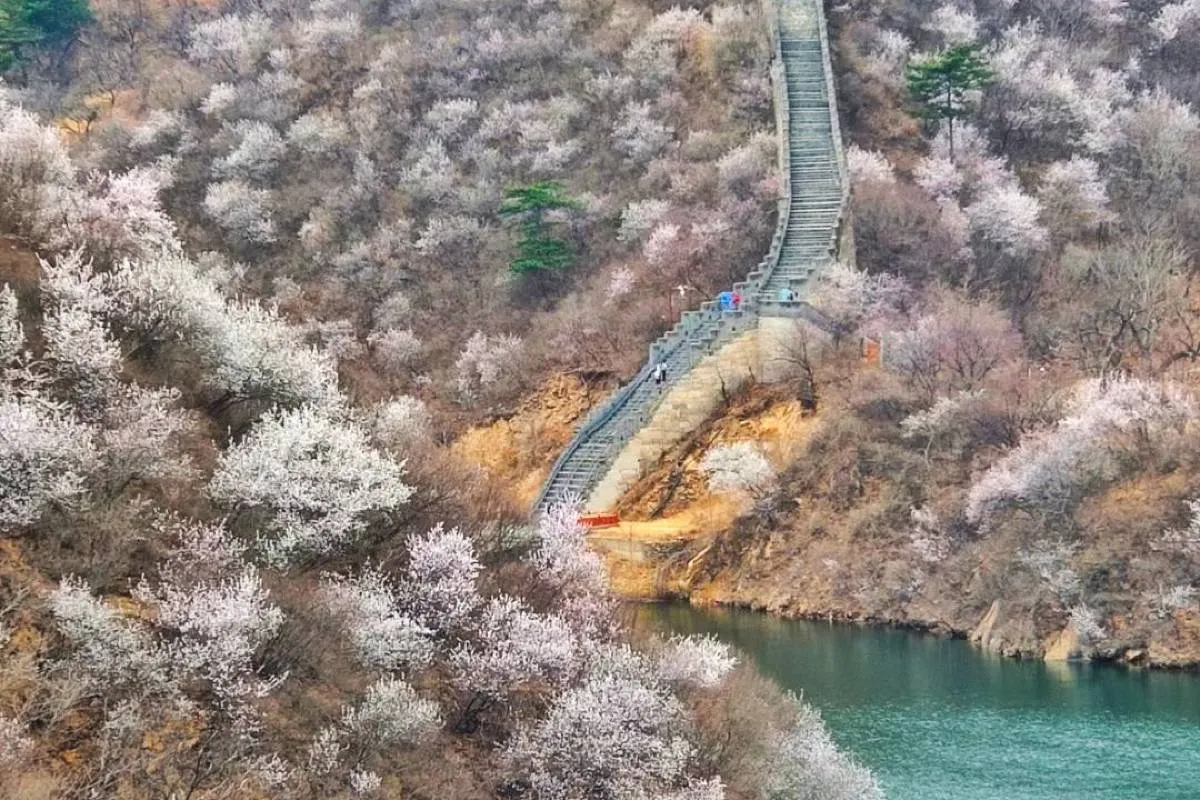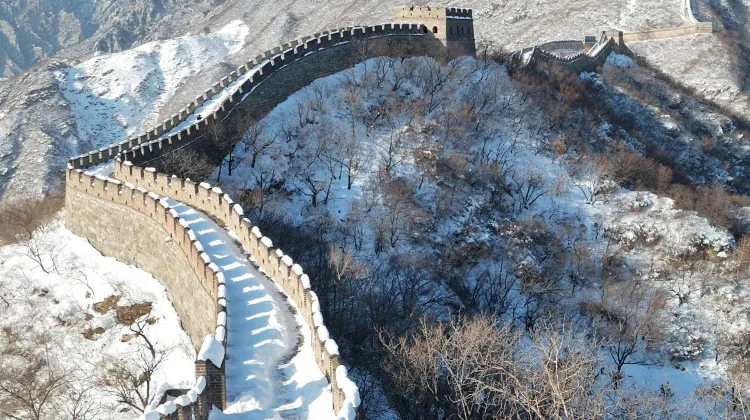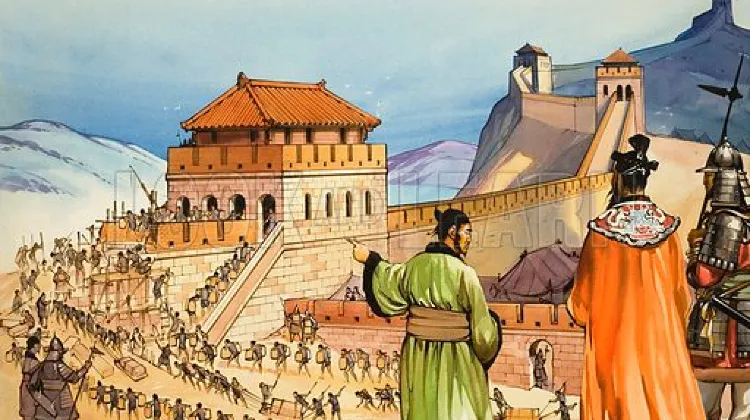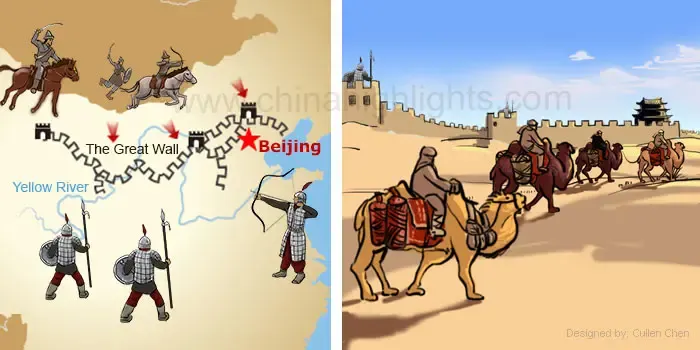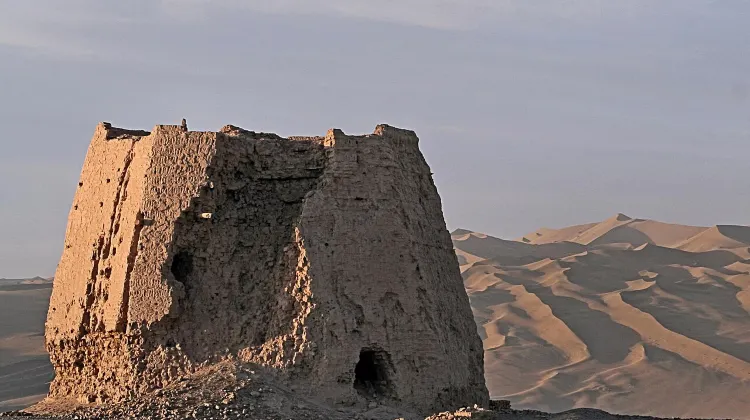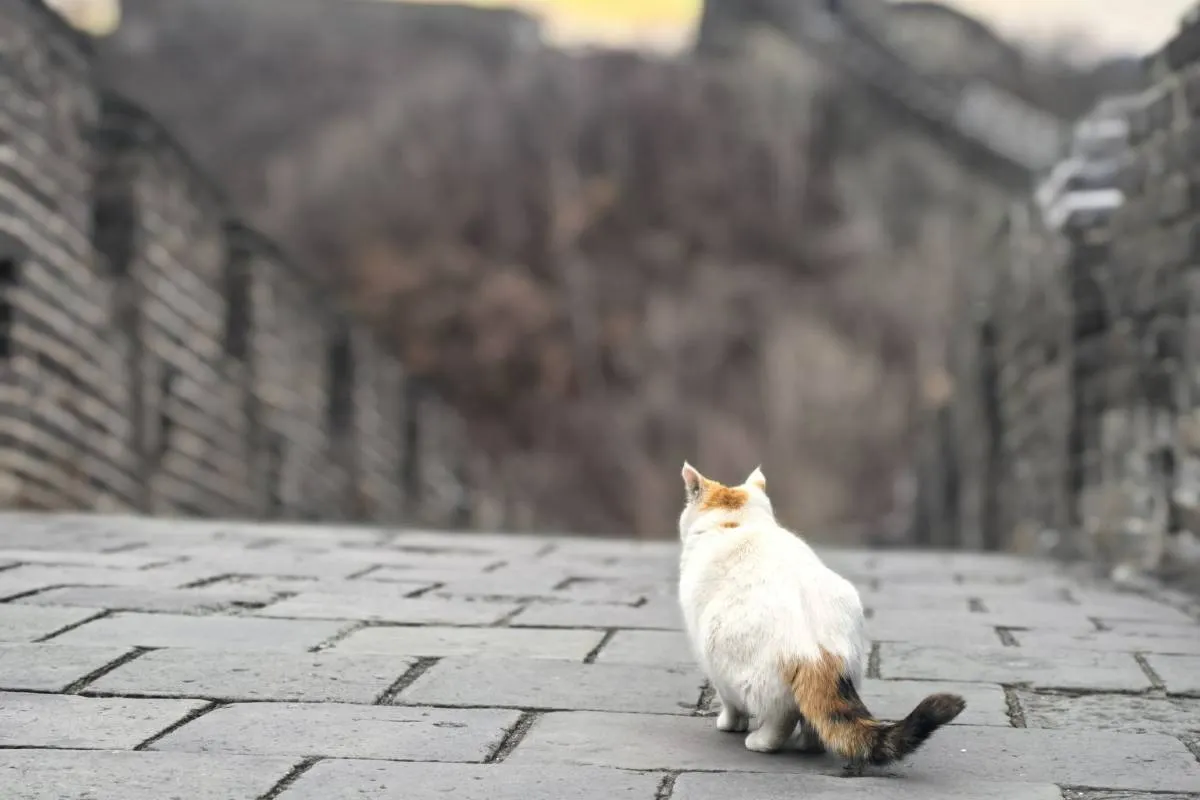Badaling - The Most Famous
Let me start with the classic! Badaling sits about 70km northwest of Beijing (like an hour by car) and it's basically the poster child of the Great Wall. There's a reason it's famous - it's gorgeous, super well-restored, and honestly the easiest to visit. You can even take a direct train from Beijing! The wall here is nice and wide with gentle slopes, perfect if you're bringing parents or kids.
Entry's ~¥45, and the cable car is ~¥140 round trip. Just try to get there before 9 AM - trust me, it gets PACKED with tour groups by mid-morning. I usually tell my friends to visit on weekdays in spring or fall for the best experience.
Mutianyu - My Personal Favorite
About 90km from Beijing, Mutianyu is what I call the "sweet spot" of Great Wall visits. It's got everything - stunning mountain views, 23 watchtowers along a 5.4km stretch, and the coolest part? You can toboggan down!
Entry's ~¥45, and you've got options to get up - cable car for ¥120 round trip or chair lift if you're feeling adventurous.
The wall here is actually wider than Badaling, with these amazing guard towers on both sides. I love coming here early morning when the light hits the mountains just right - perfect for photos without the crowds.
Cats I found on Mutianyu
This one's special - it's the only section you can visit at night! About 2 hours from Beijing, Simatai is totally worth the trip.
During the day it's ~¥40 to enter, but the real magic happens during the night tour (¥180). They light up the wall with traditional lanterns, and seeing it snake across the dark mountains is just incredible.
They only let in 600 people at night, so book ahead! The wall here is pretty steep (they don't call it the "Stairway to Heaven" for nothing!), but the views over the reservoir are unreal.
Pro tip: get there for sunset and stay for the light show!
Parts of the Great Wall actually dip into a lake! They call it the "Water Great Wall," and it's absolutely gorgeous, especially in summer.
About 70km from Beijing, it's less restored and a bit wild, which makes it feel more authentic. You can even take a boat ride on the lake for some amazing photos. Just a heads up - the hiking here can be pretty steep!
How long is the Great Wall?
Let's clear up one of the most confusing questions about the Wall - its actual length. After years of different measurements and recent discoveries, here's the real scoop!
What Survives Today
The Ming Dynasty Great Wall - what most tourists visit today - stretches about 8,000 kilometers (5,000 miles). But here's the catch: only about 30% of these Ming walls are still in good condition. The rest have been damaged by time, weather, and unfortunately, human activity.
According to the Chinese government survey (2012), the total length of all Great Wall sections from all dynasties combined is a staggering 21,196 kilometers (13,171 miles). That's like driving from New York to Los Angeles more than four times! However, not all of this exists today. To put this in perspective, the Great Wall's total length is:
- Half the length of the Earth's equator
- Equal to walking from Beijing to Rome... twice
- The same as 242,000 football fields lined up
Length Throughout History
The Wall is actually a complex network of walls built during different dynasties:
- Qin Dynasty (221-206 BCE): 5,000 km
- Han Dynasty (202 BCE-220 CE): 10,000 km
- Ming Dynasty (1368-1644 CE): 8,000 km
Interestingly, the Wall keeps "growing" - not physically, but through new discoveries! Archaeologists using advanced technology regularly find previously unknown sections. In 2020, over 600 kilometers of ancient wall segments were newly documented in northern China.
Remember: When someone asks about the Wall's length, the real question is "Which wall from which dynasty?" The answer could vary by thousands of kilometers!
How to Get to the Great Wall & Parking Tips
After countless visits and helping hundreds of travelers, here's your detailed guide to reaching the Great Wall stress-free and like a local.
By Car (Recommended)
Driving offers best flexibility and comfort, perfect for exploring multiple sections in one day. Most sections have large parking facilities, with fees ranging from ¥30-80 (~$4-11) per day depending on location and season.
Mutianyu has three well-organized lots, while Badaling and Simatai both have two large parking areas connected by shuttle buses. The less-visited Jinshanling and Huanghuacheng sections offer more relaxed parking with fees around ¥20 (~$3).
For the best experience, arrive before 8:30 AM to beat tour buses, especially during peak season from April to October. You'll definitely need AutoNavi (高德地图) or Baidu Maps - download and set your preferred language before leaving your hotel. If you're renting a car, on Trip.com car rental you can compare & rent at major car rental companies like Hertz and Avis. They all have convenient counters at Beijing Capital Airport with English-speaking staff.
📍 Parking Tips & Tricks
The busiest parking hours run from 10 AM to 2 PM, when tour buses flood the lots. Always keep some cash or Alipay ready for parking fees, and don't forget to photograph your parking spot and section number - trust me, everything looks the same after a long day of hiking!
While Mutianyu's East Lot (P3) is my secret spot for busy days, Jinshanling's main lot and Huanghuacheng's lakeside parking offer equally peaceful alternatives. Most sections offer free shuttle services from the parking areas to the main entrances, running every 15 minutes throughout the day.
By Public Transport
The budget-friendly public transport option typically costs between ¥12-16 (~$2-3) each way.
From Beijing, catch Bus 867 at Dongzhimen Station for Mutianyu, Bus 877 from Deshengmen for Badaling, or the direct tourist bus to Simatai from Dongzhimen. For Jinshanling, take the special tourist bus from Wangjing West Station. Gubeikou and Huanghuacheng require a combination of subway and local buses.
Services usually start between 6:30-7:00 AM, with final returns between 4:00-5:30 PM depending on the section and season. Most visitors find Alipay the most convenient payment option - just remember to set it up before your trip.
Private Driver & Tours
For the most comfortable experience, arrange a private driver through your hotel or Trip.com, with prices ranging from ¥450-900 (~$62-124) per day depending on vehicle type. Most services include an English-speaking driver, generous waiting time, hotel pickup and drop-off, plus amenities like bottled water and WiFi.
Group tours offer great value starting from ¥240-320 (~$33-44) per person, typically including entrance fees and lunch. The real advantage here is the flexibility to visit multiple sections - many drivers can take you from Mutianyu to Huanghuacheng in 1.5 hours, or from Jinshanling to Simatai in just 40 minutes.
Best Time to Visit the Great Wall of China
For best weather and beautiful scenery, go in autumn (September to November) or spring (March to May).
Autumn: Perfect Weather & Views (September to November) 🍂
Autumn is hands down the best time to visit. Here’s why:
- Ideal Weather: Cool temperatures (around 50°F to 70°F / 10°C to 21°C) make hiking comfortable, and you won’t be drenched in sweat.
- Gorgeous Foliage: The Wall looks amazing with fall colors — think red, gold, and orange leaves.
- Fewer Tourists: It’s less crowded than summer, so you can enjoy a peaceful walk along the Wall.
Where to Visit:
- Mutianyu: Great for a mix of beautiful views, fewer crowds, and easy access. You can even take a cable car or toboggan down.
- Simatai: A little wilder and steeper, with a dramatic feel and less restoration. Perfect for adventurers and photographers.
Spring: Mild Weather & Fresh Blooms (March to May) 🌸
Spring is another fantastic choice, especially for:
- Mild Temperatures: Perfect for hiking, with temps between 50°F and 75°F (10°C to 24°C).
- Nature in Bloom: Cherry blossoms and greenery make the Wall look even more beautiful.
- Less Crowded: You’ll miss the summer rush, so it’s easier to explore.
Where to Visit:
- Badaling: The most popular section with great restoration and easy access from Beijing. It’s great in spring when the flowers are blooming.
- Huanghuacheng: Less crowded and unique with the lake view. If you want a more peaceful experience, this is a hidden gem.
Why Not Summer or Winter?
- Summer (June to August): It’s hot and crowded — not ideal for a comfortable visit.
- Winter (December to February): Beautiful with snow, but freezing cold and some sections may be closed.
Who and why built the Great Wall of China?
The Great Wall of China was built over centuries, starting from defensive walls in the Warring States period to the grand fortifications of the Ming Dynasty. Its main purpose was to protect China from northern invasions, control trade, and symbolize the strength of the empire.
Source from Look and Learn
Who Built the Great Wall?
The Great Wall of China was built over several dynasties, primarily for defense, and was constructed by various groups, including soldiers, peasants, convicts, and skilled laborers. The construction spanned from the Zhou Dynasty (1046–256 BCE) through the Ming Dynasty (1368–1644).
| Dynasty/Period | Emperor/Ruler | Primary Builders | Materials Used |
| Zhou Dynasty (1046–256 BCE) | Zhou Kings | Feudal Lords' Soldiers, Local Labor | Earth, Wood, Stone |
| Spring & Autumn Period (770–476 BCE) | Various Feudal Lords | Soldiers, Peasants | Wood, Earth |
| Warring States Period (475–221 BCE) | Various Warring States Leaders | Soldiers, Local Labor, Peasants | Wood, Earth, Stone |
| Qin Dynasty (221–206 BCE) | Qin Shi Huang | Laborers, Soldiers, Convicts | Rammed Earth |
| Han Dynasty (206 BCE–220 CE) | Emperor Wu of Han | Soldiers, Local Workers | Wood, Earth, Stone |
| Ming Dynasty (1368–1644) | Emperor Hongwu & Emperor Yongle | Soldiers, Skilled Workers | Stone, Brick, Mortar |
Key Builders and Their Contributions:
- Qin Shi Huang (Qin Dynasty): Initiated large-scale construction by linking walls built by different states.
- Emperor Wu of Han (Han Dynasty): Expanded the Wall to protect Silk Road trade routes.
- Ming Emperors (Ming Dynasty): Rebuilt and fortified the Wall with stone, brick, and mortared sections.
Source from China Highlights
Why Was the Great Wall Built?
The primary reason the Great Wall was built was defense—to protect the Chinese Empire from nomadic tribes and invading forces from the north. However, over time, the purposes and importance of the Wall evolved. Here are some key reasons why it was constructed:
- Protection from Nomadic Tribes: The Great Wall was primarily designed to protect Chinese civilization from nomadic invaders such as the Xiongnu, Mongols, and Tatars. These tribes often raided Chinese settlements for resources and land. The Wall acted as a physical barrier to prevent these invasions, making it difficult for them to easily cross into Chinese territory.
- Symbol of Power and Unification: During the Qin Dynasty, the wall also symbolized the emperor's authority over the newly unified Chinese states. By linking existing walls and creating a massive fortification, the emperor demonstrated the might of the newly formed empire and its ability to command large-scale labor forces.
- Control of Trade Routes: In the Han Dynasty, the Wall helped secure the Silk Road, the vital trade route connecting China with Central Asia, India, and the Roman Empire. It not only protected against military threats but also regulated trade and immigration along these routes.
- Psychological Barrier: The Wall became a symbolic barrier, both for invaders and for the people within China. Its massive scale and towering presence served as a psychological deterrent, signaling to invaders that crossing the Wall would be a difficult and costly undertaking.
- Military Strategy and Surveillance: In later periods, especially during the Ming Dynasty, the Great Wall was part of a larger military strategy that included watchtowers, signal fires, and patrols. It enabled rapid communication and allowed the military to monitor and respond to threats from a distance.
History of the Great Wall of China
Han Great Wall remanent(from Wikipedia)
The Great Wall's story spans over 2,500 years, weaving through Chinese dynasties like the ancient fortification itself winds through mountains. While most visitors know the Ming Dynasty wall we see today, the Wall's true history is far richer and more fascinating.
- It all began during the Spring and Autumn Period (771-476 BCE), when China was divided into feudal states constantly at war. The first walls were simple fortifications of packed earth and stone, built by individual states to protect their territories. The real game-changer came during the Warring States Period (475-221 BCE), when separate walls started appearing across northern China.
- But the Wall's most dramatic chapter opened with Emperor Qin Shi Huang in 221 BCE. After unifying China, he launched an ambitious project to connect existing walls into one massive defense system. Hundreds of thousands of workers – soldiers, convicts, and peasants – labored in harsh conditions, earning the Wall its nickname as the "longest cemetery on Earth." The price was steep: historical records suggest that for every meter of wall, one life was lost.
- Through the Han Dynasty (202 BCE-220 CE), the Wall stretched westward into the Gobi Desert, protecting the lucrative Silk Road trade routes. The Han wall was revolutionary, using new materials like willow branches and reeds in the desert sections where stone was scarce.
- After the Han, wall-building took a backseat until the Ming Dynasty (1368-1644) launched the most ambitious construction yet. This is largely what we see today – an engineering marvel of cut stone and brick, designed not just for defense but for rapid troop deployment with its innovative signal tower system.
Fun Facts about Great Wall of China
Cat-Friendly Sections 😺 Mutianyu and Badaling sections are famous for their cat residents. The steps and towers provide perfect sunbathing spots, while the tourist crowds mean plenty of snacks and attention. Some cats have lived here for generations, making them true descendants of ancient Wall guardians!
The Space Myth about Great Wall 🚀 Nope, you can't see it from space with the naked eye! Even Chinese astronaut Yang Liwei confirmed this. But here's the cool part - you can spot it using radar imagery from low Earth orbit. Makes sense when you think about it - the Wall's only 5-8 meters wide!
Quirky Construction Facts 🧱 Builders got creative with materials - they used everything from human hair in the mortar to tamarisk branches in desert sections. The most surprising ingredient? Sticky rice flour mortar, which made it incredibly strong. Some workers were even paid in silk and tea instead of money!
Wall Wisdom 📚 Ancient Chinese had a saying: You're not a real hero until you climb the Great Wall. But my favorite modern saying among hikers is: "The Wall wasn't built in a day, and you shouldn't try to climb it all in one either!"
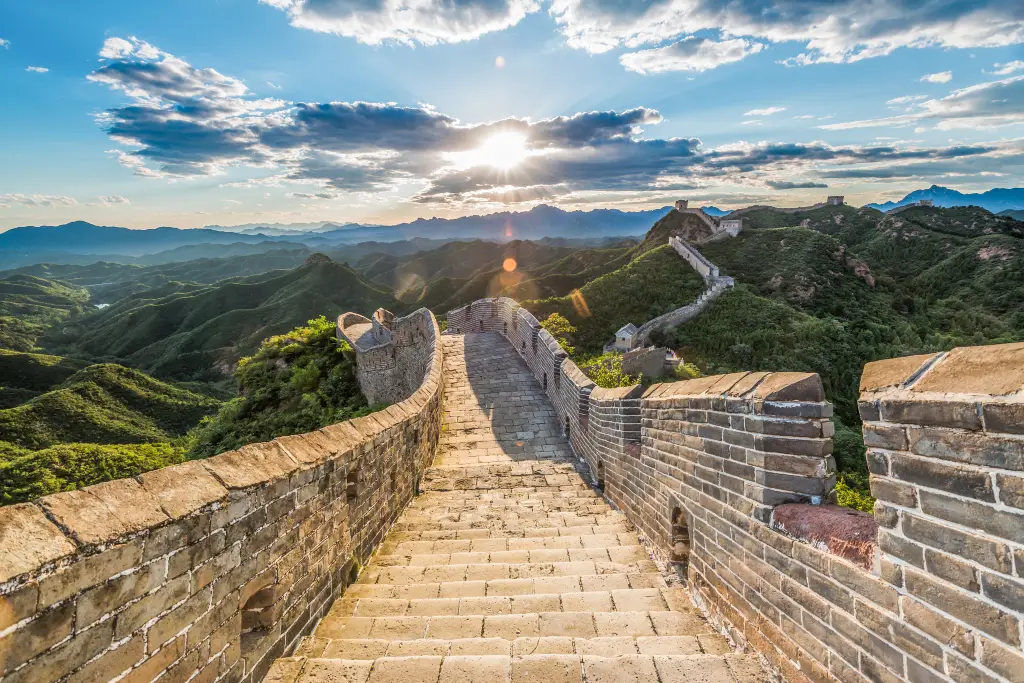






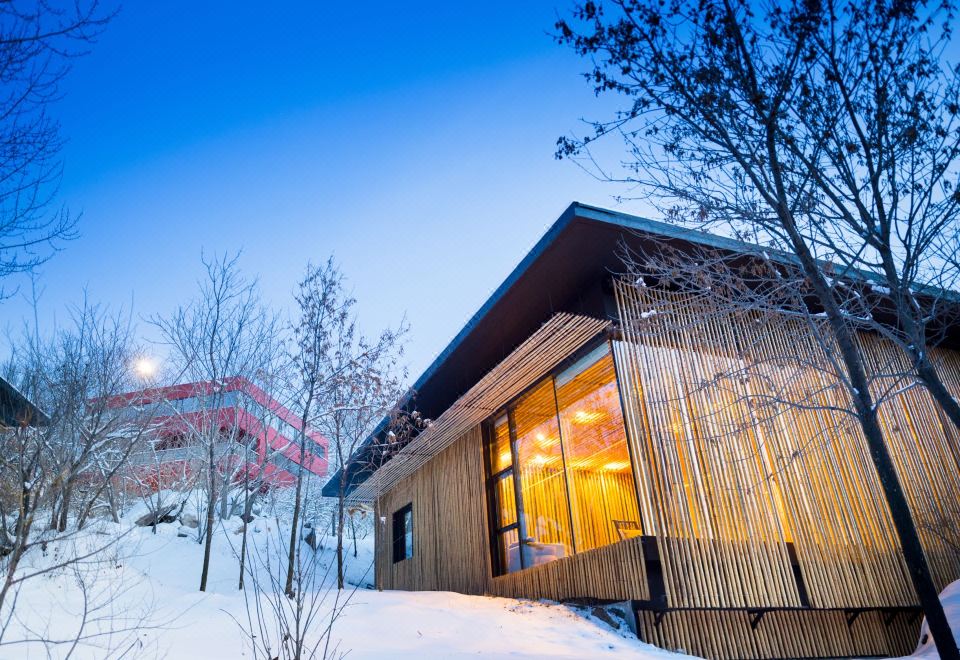
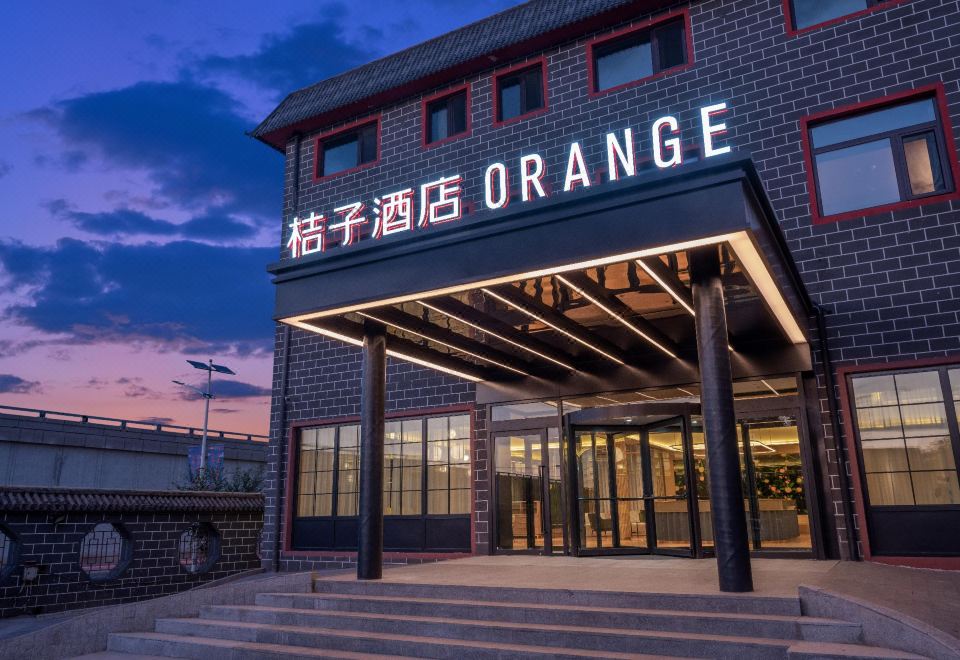
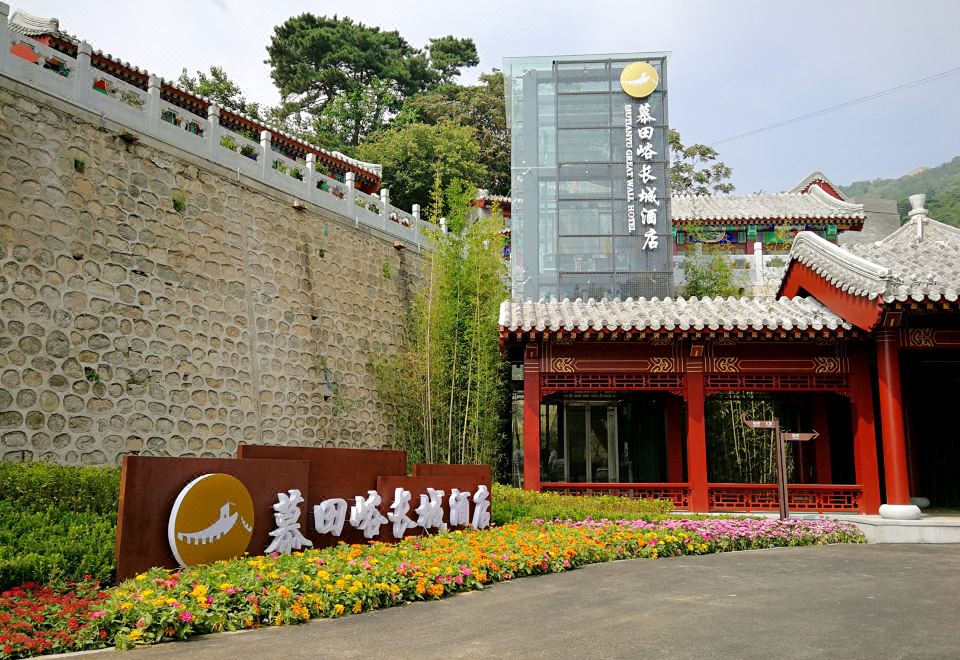

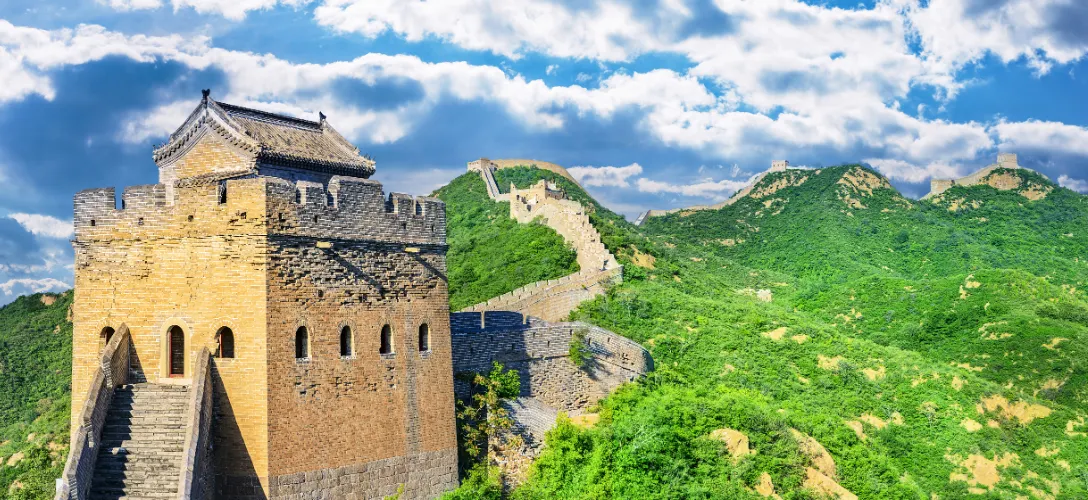
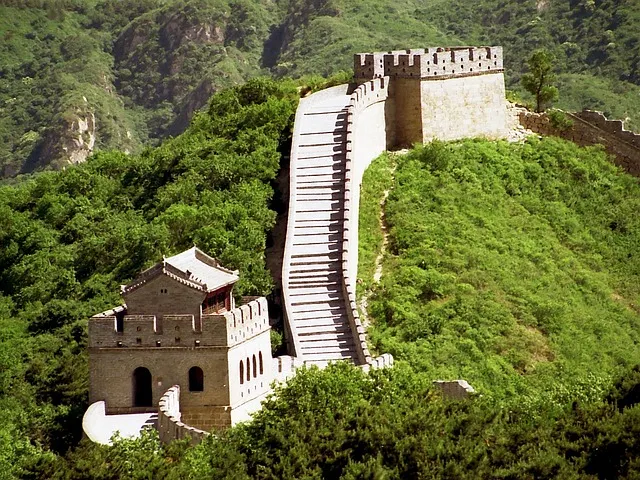
 384349 booked
384349 booked





